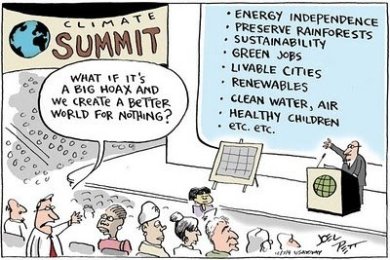The climate change ‘debate’ has been in the media for a while now. But the big question is why is it still being called a ‘debate’? While there is a very valid argument for allowing the public to be able to access a range of different arguments in order to reach a fully informed opinion on public issues, there has been a tendency to report climate change as if there is equal merit to arguments both for and against whether it even exists, when the real question should be ‘how do we deal with it’?
This issue is a prime example of the need for policy regulation regarding media coverage because the media plays a huge role in shaping the public response to climate change. This public response can in turn affect policy development on the actual issue and what we as a nation do about it. As Lyytimäki (2011, 651) indicates the media holds the power to “create awareness of some issues and push others aside or into oblivion.” As such there needs to be regulations requiring the media to represent the issue fairly and not create a ‘false balance’. Ashley (2011) argues “the problem is that on one side of the debate you have 97% of the world’s published climate scientists and the world’s major scientific organisations, and on the other side you have fools.”
But why has this false balance been occurring?
The issue of media ownership seems to play a part. In Australia, media ownership is very concentrated with the two key players being Fairfax Media and News Ltd who together own approximately 90% of Australian newspapers (Carson, 2012). This creates concerns about the public being unable to access a diverse range of opinions but I think it gets a bit worse. Gina Rinehart – Australia’s wealthiest individual who made her fortune in the mining industry – has become Fairfax Media’s largest shareholder (Marks, 2012). She is also a well known climate change sceptic. How can it be possible to present the issue accurately when someone in the minority argument has control over a majority of the media?
Unfortunately, despite the recent reviews into media regulation this concentration of media ownership has not been a focus. Instead the issue was acknowledged and it was simply recommended the Government investigate it (Carson, 2012).
Ashley, M (2011) ‘Event horizon: the black hole in The Australian’s climate change coverage’ Media & Democracy – The Conversation, http://theconversation.com/event-horizon-the-black-hole-in-the-australians-climate-change-coverage-2642, accessed 27 March 2013.
Carson, A (2012) ‘Finklestein inquiry report cause for ‘cautious optimism” The Conversation.
Lewandowsky, S (2011) ‘Selling climate uncertainty: misinformation and the media’ Media & Democracy – The Conversation, http://theconversation.com/selling-climate-uncertainty-misinformation-and-the-media-2638, accessed 28 March 2013.
Lyytimäki, J (2011) ‘Mainstreaming climate policy: the role of media coverage in Finland’ Mitigation and Adaptation Strategies for Global Change, Vol.16, Issue 6, pp649-661.
Marks, K (2012) ‘Gina Rinehart: The billionaire climate change sceptic who wants a slice of Australia’s media’ The Independent, 28 June, http://www.independent.co.uk/news/media/press/gina-rinehart-the-billionaire-climate-change-sceptic-who-wants-a-slice-of-australias-media-7893594.html, accessed 28 March 2013.
